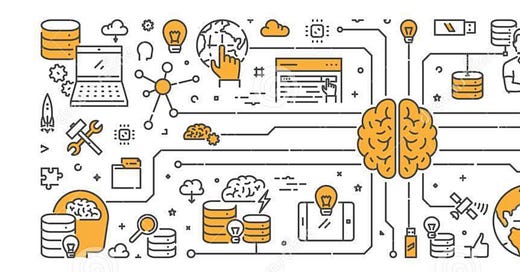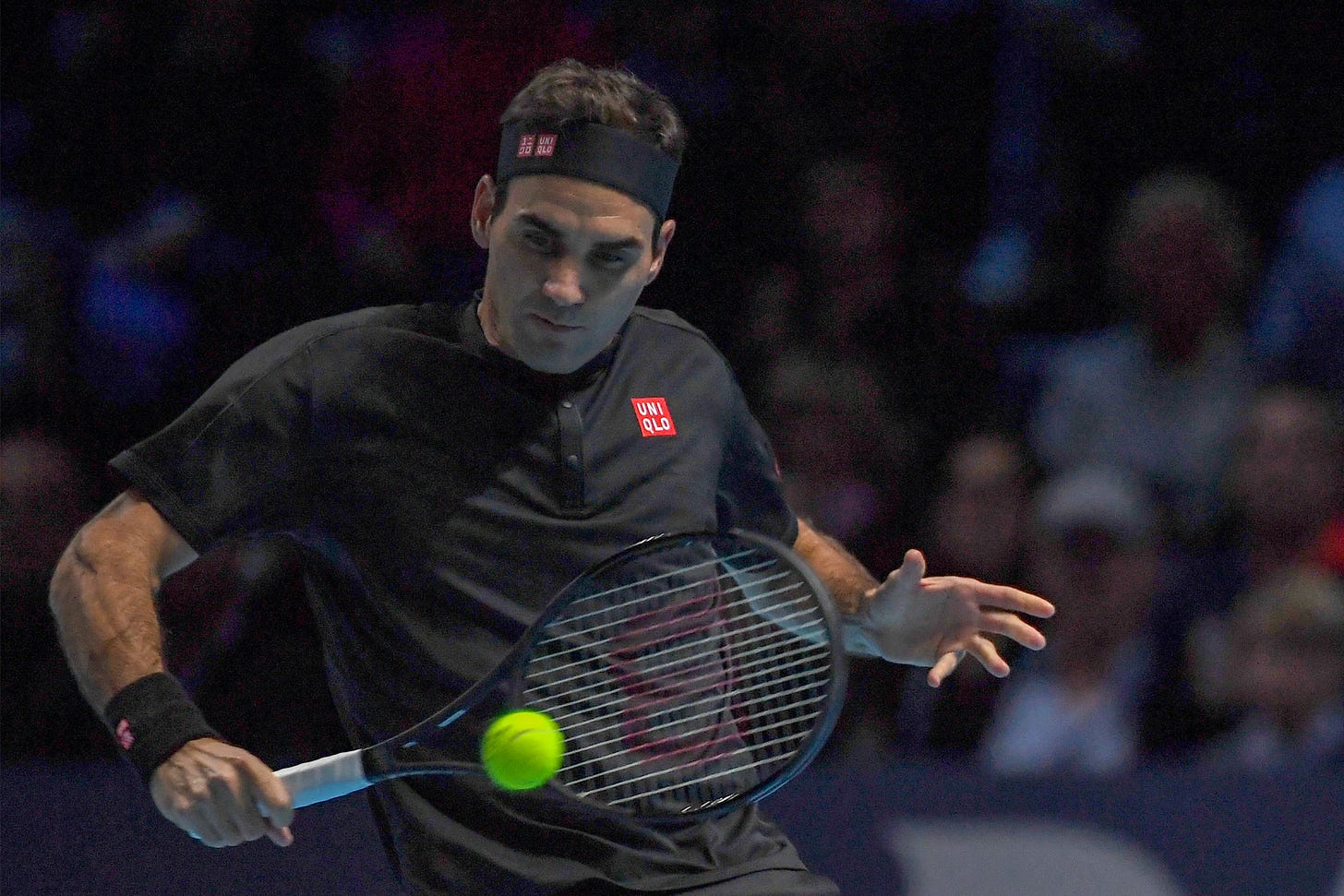Handbook of Your Brain in Business: 2. The High-Performing Brain 2.2 Your Predictive Brain
Handbook of the Brain in Business
The High-Performing Brain
Your Predictive Brain
Previous: What is the High-Performing Brain?
Wouldn’t it be good to predict the future? To see into the future and make decisions based on our visionary perception. Indeed, us human beings have been fascinated by predicting the future since time immemorial. We have fortune tellers, horoscopes, and the themes of countless popular films is the concept of prophecy. All fiction or superstitious junk, no?
Well, the thing is, and this may surprise you, the brain is actually a prediction machine. Yes, it is! I will shortly outline why. But the benefits are obvious: if you can predict the future, you can be more efficient and better at whatever you do. If you can predict how people will behave, you can better prepare for the situation. If you can predict what someone will say you can have a response ready, if you can predict the stock market, you can…well, maybe we can’t do that.
But back to what I noted in the previous section and that there something known as the Athletic Intelligence Quotient (AIQ) and that this measures four aspects
Game awareness
Reaction time
Pattern recognition
Learning
In the above you can see two aspects game awareness and pattern recognition, and these are related to prediction. Game awareness involves understanding what the situation is in a given sport and then being able to position yourself and prepare yourself for the upcoming situations. This may by being more defensive or preparing for an attack.
Pattern recognition is also part of the same recognising patterns that regularly occur: how players are positioned, whether in attack or defence, and from this predict what is about to, or likely to, happen. This also explains why sports are actually much more cognitive than many give them credit for.
Roger Federer in his prime as one of the greats in tennis would hit a shot and in that moment his eyes would follow the ball and the movement of his opponent, as soon as his opponent would move towards the ball, his brain would start processing potential scenarios. As his opponent prepares for a shot, all in a fraction of a second, his brain would be calculating and predicting potential shot trajectories. This would be by comparing previous templates based on years of experience: how fast the ball is moving, in what direction, the movement of the player, racket position and movement, what shots would be possible and the likely trajectories. In those fractions of a second his brain would already have predicted likely paths and Roger Federer would have positioned his body to be prepared for the return.
The above example shows that sports require incredibly complex processing for the brain and therefore why sport is good for brain processing - rather than thinking of sport as something trivial we should be seeing sport as a complex brain training and why it should be encouraged in children - not just for athletic abilities but also for cognitive abilities. Though the athletic, fitness, and health benefits are also incredibly beneficial for the brain, as in the study I quoted in the previous section which showed that the benefits of sports in childhood could still be seen 30 years later in the brain.
In sports we may speak of “sporting intelligence” and indeed sports fans may consider their heroes geniuses. This is in no short part due to the ability of the brain to read the game and predict what will happen combined with the physical attributes to affect action, or the desired actions.
So far, the current thinking for most people of the brain is that it operates in response to the various stimuli it receives. We see, hear or feel something and then respond to it. Sounds logical.
However, if every movement would require processing everything would take an age: to write this I would have to process every movement of my fingers and be doing this in real time. Though the brain and body processes signals quickly, it would all quickly add up: for each key I type, I need to identify the key, so first be cognitively be aware that I need to type an “a” then send this signal to my premotor cortex, which would match this to a memorised pattern from my hippocampus and cerebellum, allowing me to know where the “a” is and which finger to activate, then send this signal to my premotor cortex which preprocesses the movement, this is then sent to my motor cortex, before passing through the thalamus, and then down my spine to my left hand which then needs to carry this out, and this all take a bit of time.
If my brain were processing the typing I am doing as I write, I would be tapping a key every second or so, at best. But I type much faster than that, thankfully. But this is because our brains can and do pre-activate ahead of time relying on learnt patterns with our predictive brains.
In 2023 a paper was published based on a collaboration between Netherlands Institute for Neuroscience (KNAW) and the Jichi Medical University in Japan [1]. For this series of experiments, outlined in the paper, they had recruited 10 patients with chronic epilepsy. In certain cases of epilepsy, which can prove to be dangerous or life threatening, it may not be clear where the epileptic fits are being generated from in the brain. Therefore, patients are taken into hospital and have electrodes implanted into various regions in the brain and are then observed over days, weeks, or even months.
This is one of the only ways that we can record deep and precise brain activity in real time in humans. These are also good research participants because they have plenty of free time in hospital to undergo various experiments.
In this experiment by Chaoyi Qin et al. they asked participants to observe various everyday scenes such as making toast for breakfast – these activities had been screened for cultural familiarity. This would involve different separate scenes such as picking up bread, putting bread in toaster, toasting bread, spreading butter, adding jam.
Now according to feedforward theory, the brain should process this information and then pre-activate regions for the action observed. When you view a person doing any activity you also pre-activate regions of the brain responsible for this particular action. Which is nice to know because it means that observing an action such as any sports activity also partly activates your own brain. Though you can’t become fit or skilled at an activity through watching, it will pre-prepare brain regions responsible for the action.
This would be the logical sequence, see, then activate. But this is not what happened when these activities were watched. What the researchers observed is that the pre-motor regions of the brain activated before the visual areas activated. How can this be? Basically, the brain was pre-empting the next actions and already activating the brain regions that would be responsible for this.
This is important information because it shows our brain is operating ahead of time predicting the next sequence.
But what happened when the researchers jumbled the sequences?
With sequences jumbled, not being in the logical order or at complete random then the brain reverted to a feedforward process. Visual cortex activated first, and only then the pre-motor cortex.
So, when viewing unpredictable or unfamiliar sequences the brain operates in a feedforward manner but with familiar sequences it predicts the next actions and already activates regions associated with carrying the action out.
From: C. Qin et al., “Predictability alters information flow during action observation in human electrocorticographic activity,” Cell Rep, vol. 42, no. 11, 2023, doi: 10.1016/j.celrep.2023.113432.
This sounds surprising but this also makes us much more efficient and effective at a carrying out familiar actions always being slightly ahead this would apply to playing the piano, hitting a tennis ball, and any other motor action that requires careful coordination. This is therefore why practice makes perfect – not only does practice build the necessary circuits but more importantly builds a pre-emptive system in the brain.
This will also apply in business contexts, be that typing on a keyboard, viewing certain business interactions, doing standardised processes, reading financial reports, giving presentations, designing strategies, doing what you know in whatever business context. Many daily interactions follow similar patterns and are therefore predictable to a large degree.
This concept of the brain as a prediction machine is not new there have been multiple scientific reviews (for example this one in 2013: [2]), but it remains a little out of the spotlight. This concept of prediction is also the key to some big theories of human behaviour. For example, Caroline Dweck of famed growth mindset [3] formed a unified theory of motivation, personality, and development, in 2017 (this competes with our SCOAP theory) and she included prediction as one of the three basic drivers of all of human action [4].
But an even more foundational model is known as the Free Energy Principle. This was formulated by Carl Friston a big name in neuroscience. He is not one of those star neuroscientists that is in the spotlight a lot but rather someone in the background working on data - his statistical parametric mapping is an international standard for analysing imaging data - essentially what drives just about every MRI machine. But he is also very philosophical and in search for a unified theory of life he had formulated the free energy principle [4], [5], [6]. A key tenet of this is what he terms surprise minimisation.
Surprise Minimisation
Surprise minimisation is what it says it is – the brain as a system is seen as an inference system that aims to use processed input to minimise surprise. This may come as a, errr, surprise but is gathering evidence.
Keep reading with a 7-day free trial
Subscribe to leading brains Review to keep reading this post and get 7 days of free access to the full post archives.






